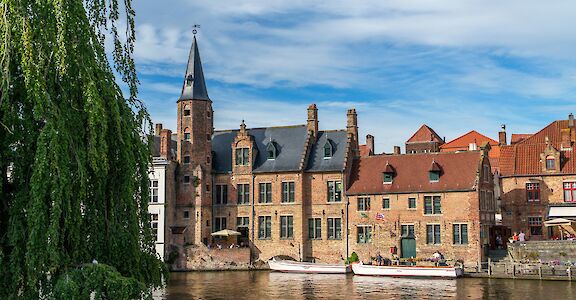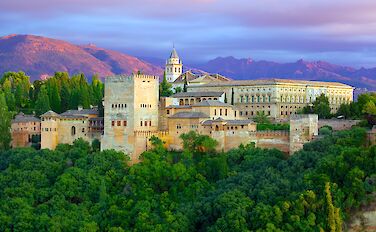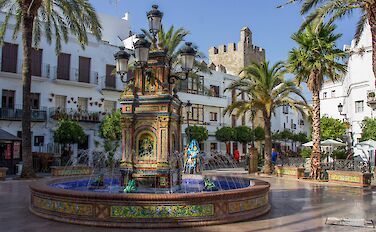Coastal Andalucía: “Two Trips in One” - and Too Much Fun!
Our Coastal Andalucía trip, which eleven of us took during a sunny, early May springtime week, should really be named “Mountain-Coastal” because it's really a trip of two personalities: the first half was an inland mountain tour across the beautiful Parque Natural de Alcornocales. The second half was a coast trip, descending westward out of the park, then southeastward along the Atlantic shore to continental Europe's southernmost point, Tarifa. These two “half trips” provide amazing contrasts of terrain and climates, with fewer tourists in this relatively unheralded stretch of Spain, sandwiched between popular Cadiz and Southern Portugal to the west, and uber-touristy Costa del Sol to the east.
Our trip began as Joyce and I pulled our car into Málaga's airport, fresh off a four day exploration of Andalucía's famous cities. Stephen, our week's guide and host, a lean, tanned, genial Brit (with a deceptively Australian-sounding accent), met us, and we drove the 90 minutes to our true starting point, Casares. This cozy town lies about five miles inland northwest of the Costa del Sol, but it seemed more like 30 miles away from the water, such is its mountainous terrain. The highlands of Spain's southern tip rise up sharply from the sea, and Casares sits atop a crest at about 4,700 feet (1,430 m.).
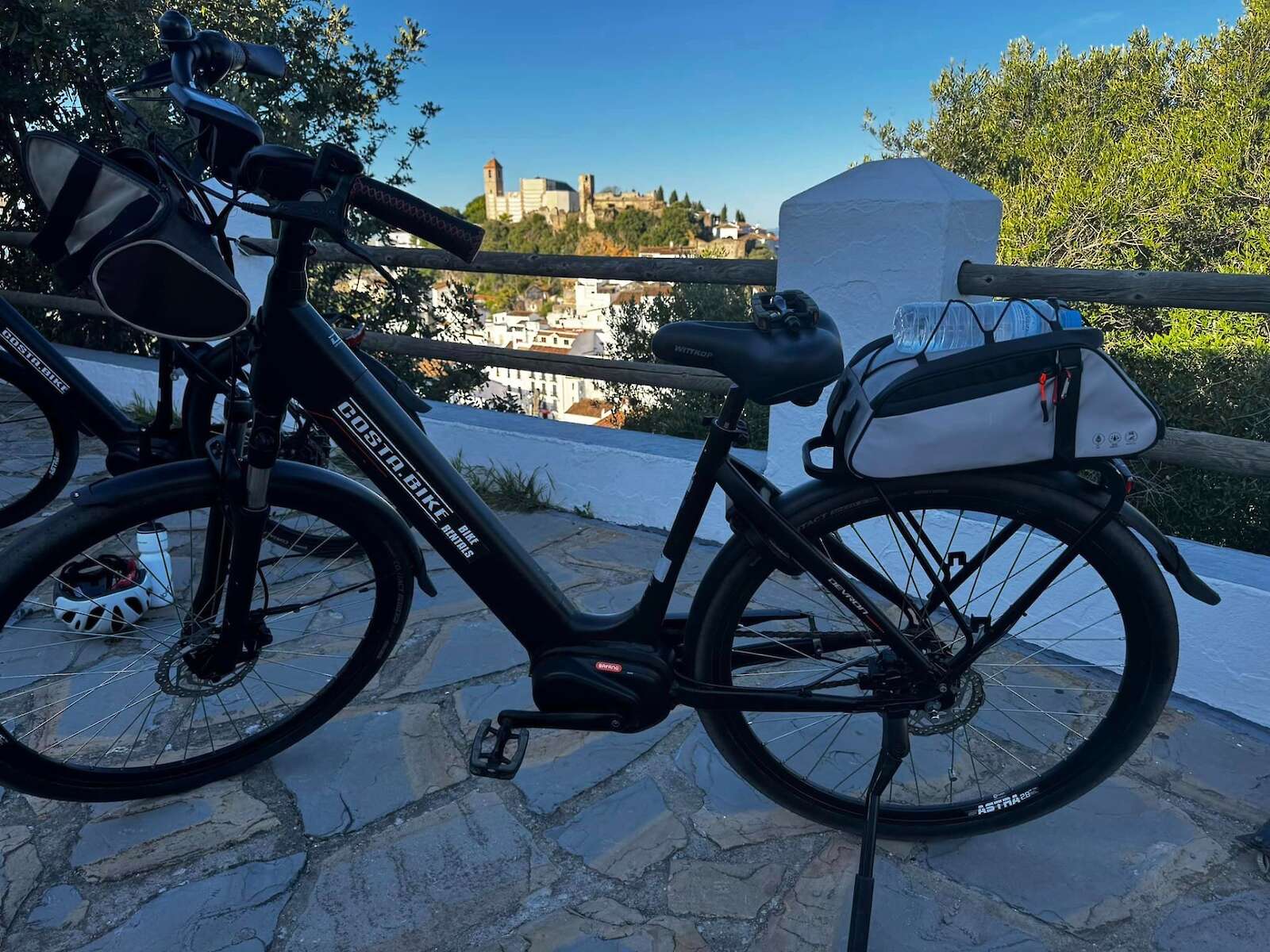
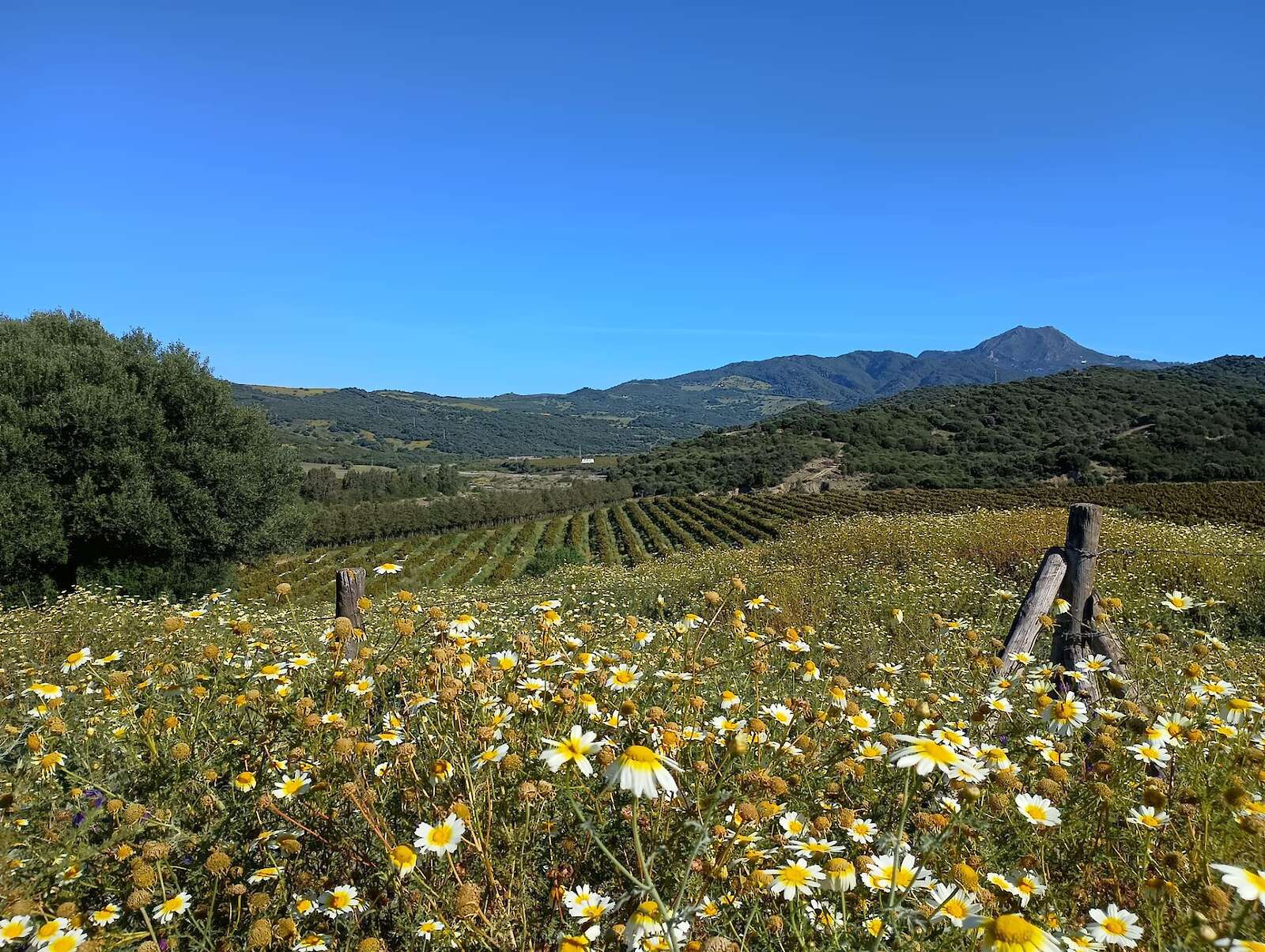
Like many of these quaint southern Andalusian mountain towns dotting the region, Casares is an eclectic mixture of cozy, whitewashed cottages, and older imposing military relics, all tightly clinging to the angular, steep, deep-green treed hillsides. Our Hotel Rural Casares was typical, a rustic inn capping a hillside, built on steep grades, and offering amazing views. This is a land of timeless mystique, testifying to ages past when Moors and Christians battled for mere yards of unforgiving terrain, and these dotted towns often mark out the ancient battle fronts of the clashes. After a potato-based dinner, some cerveza or vino, a good night's rest, and a filling meats/cheeses breakfast the next morning, we chose our e-bikes and soon set off under the new morning sun.
Immediately, we whooshed down steep, exhilarating downhills on hairpin-terraced, shaded mountain roads; these soon gave way to lush valleys, carpeted in the Spanish spring's sweet array of flowers, olive and fruit trees; then a short ascent up to our next town. The second day held our anxiously-anticipated, most difficult stretch, for which we trained at home: a mostly uphill struggle to the highest backbone of the park. These uphills were long but forgivingly only mildly steep, while the short steeper pitches were mercifully few, and we had enough flats to provide much-welcomed relief. As we ascended, the greenery transformed into steeper, brown barren rock-walled stretches, which occasionally opened, providing majestic overlooks and vistas, under the Andalusian crystalline azure sky.
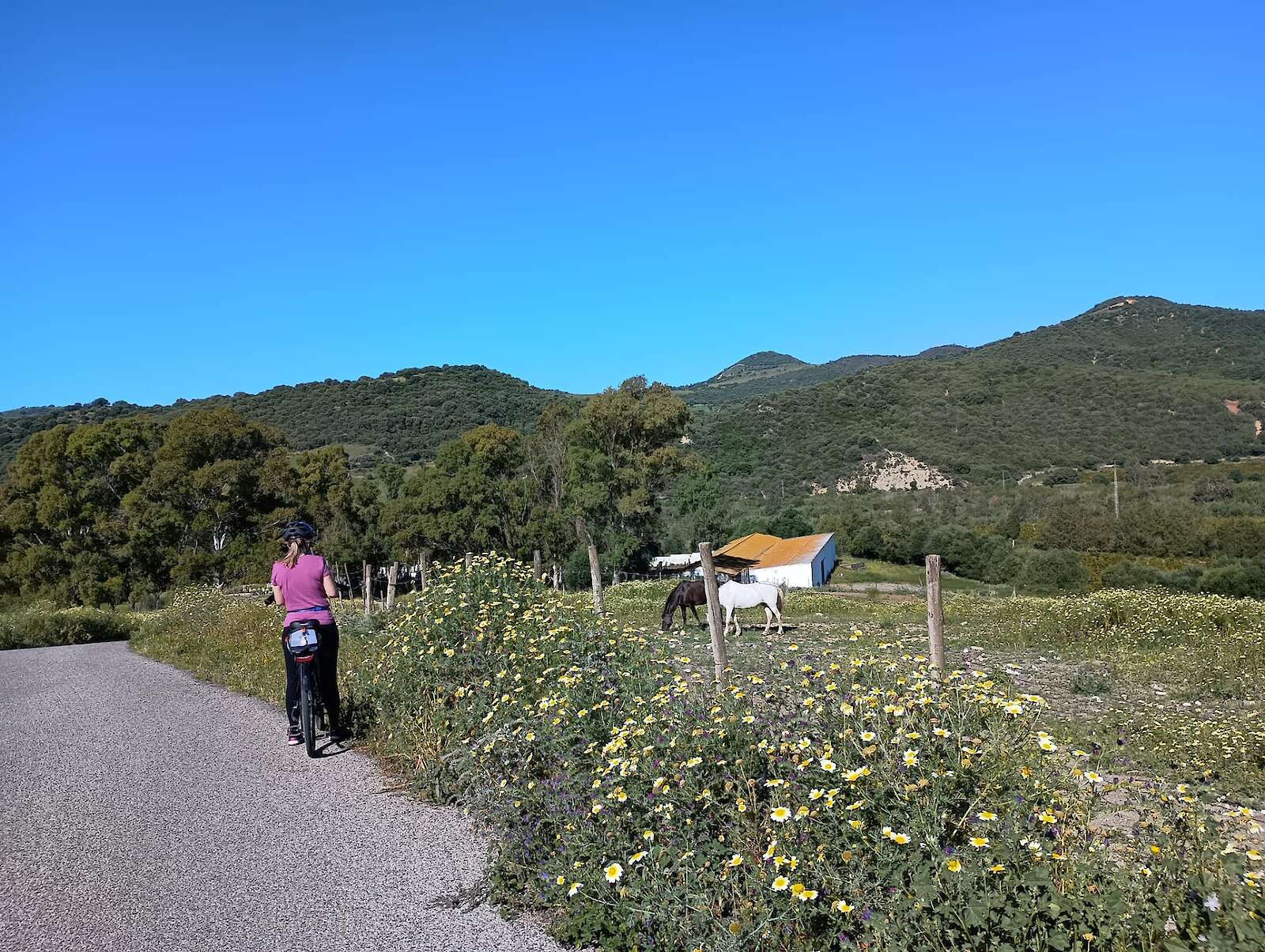
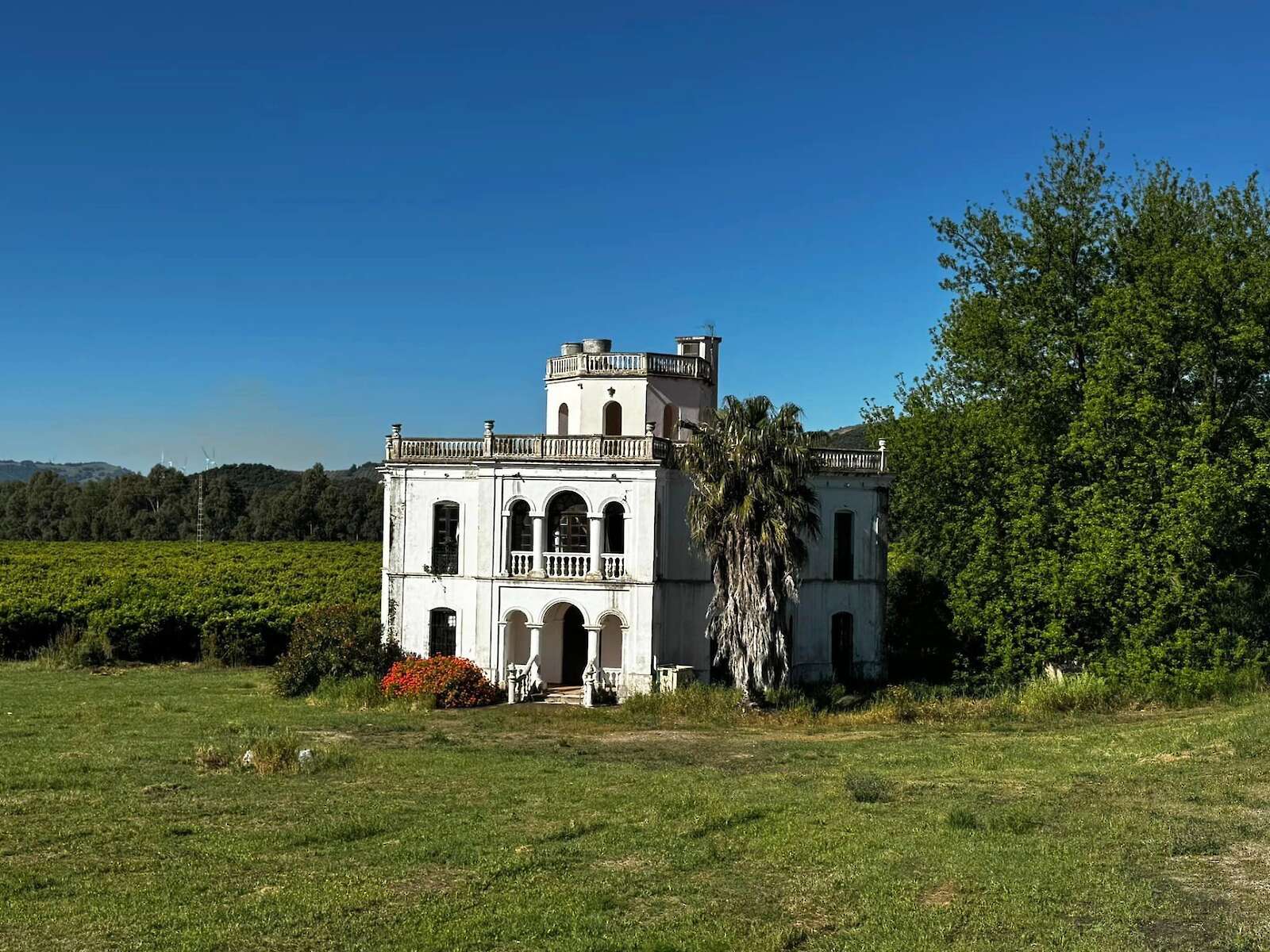
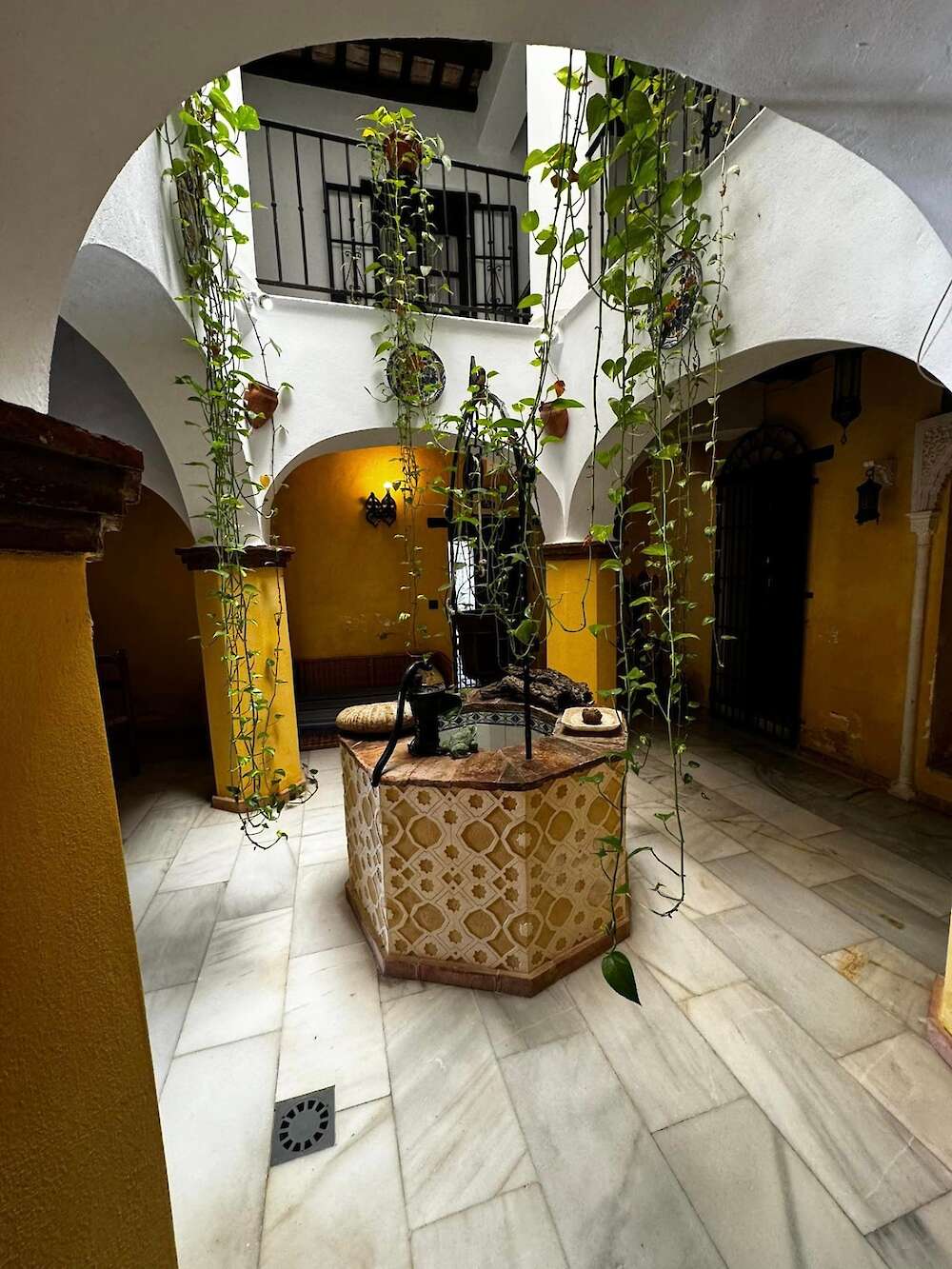
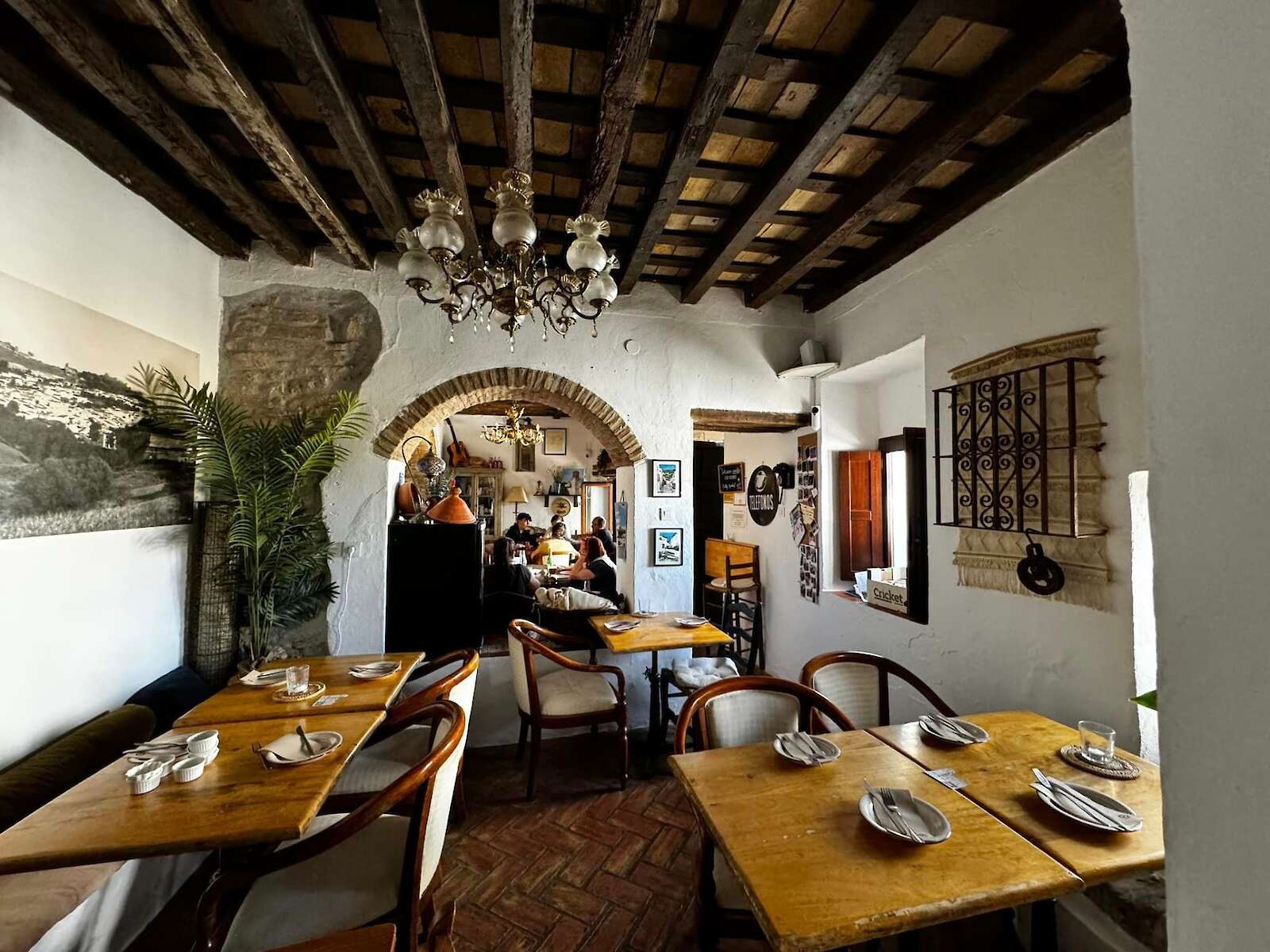

For three days, we leapfrogged through these picturesque villages, passing by old avocado estates, rustic farms replete with grazing horses, goats, and oblivious cattle claiming the road as their own; with almost never a car. We rode during the cool, shady mornings through cork forests and their half-shaven barks; climbed once-imposing but now eroded old Moorish and Christian forts and castles of the fierce Reconquista; and lodged in towns with “La Frontera” in their names, marking those oft-shifting ancient battle lines. We immersed ourselves in the fulfilling routine of enjoying small cafés and equally cozy town squares and plazas in each white-painted village. Bars and rustic posadas (straight out of a Spaghetti Western) existed side by side in long rows, often surprisingly bustling at night, including a crammed, rowdy First Communion party, a big deal in most of Spain; daytimes were quiet and sleepy. Our fare usually included simple yet delicious local food, often beef, lamb, and seafood, typical of this region.

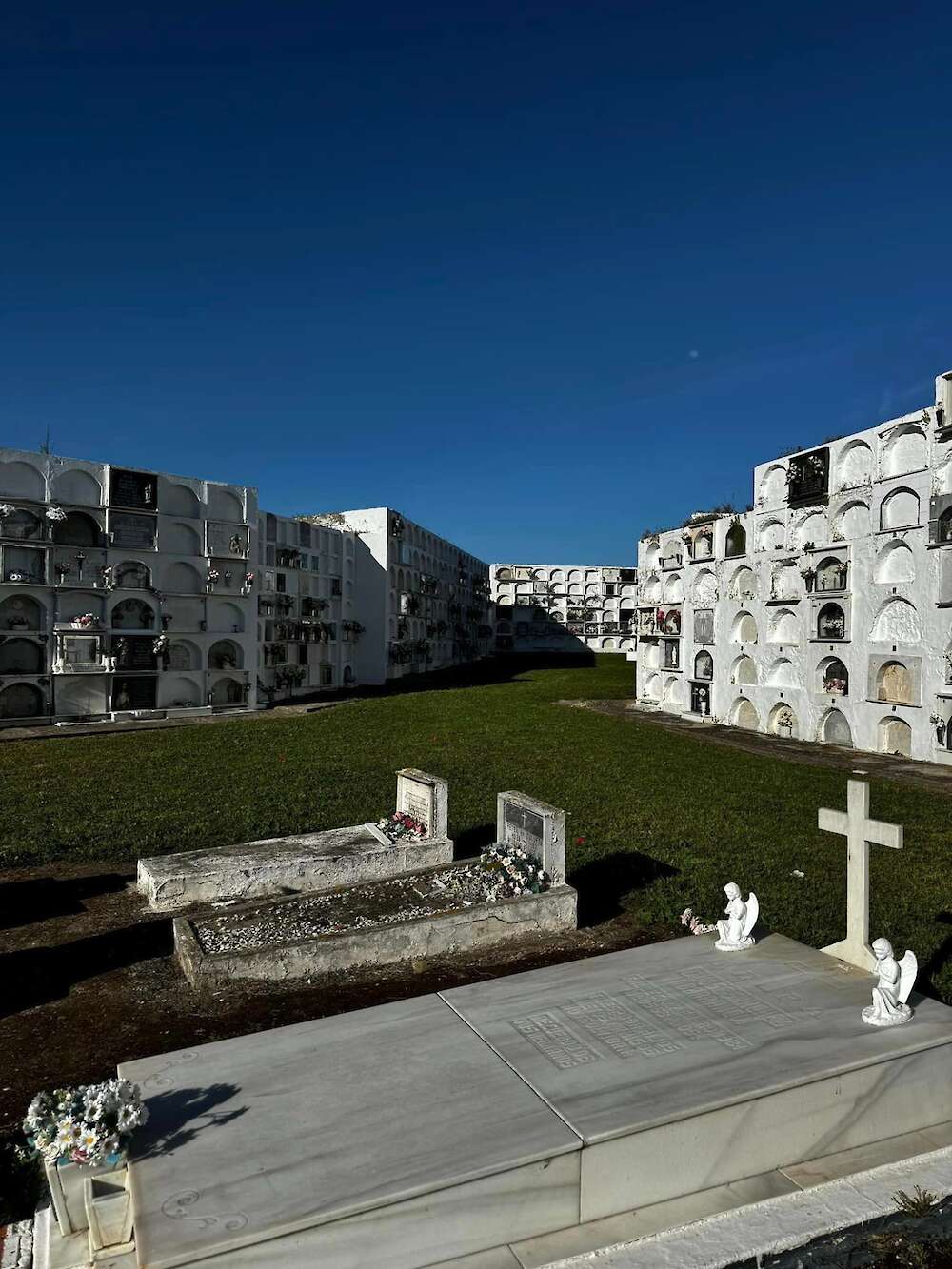
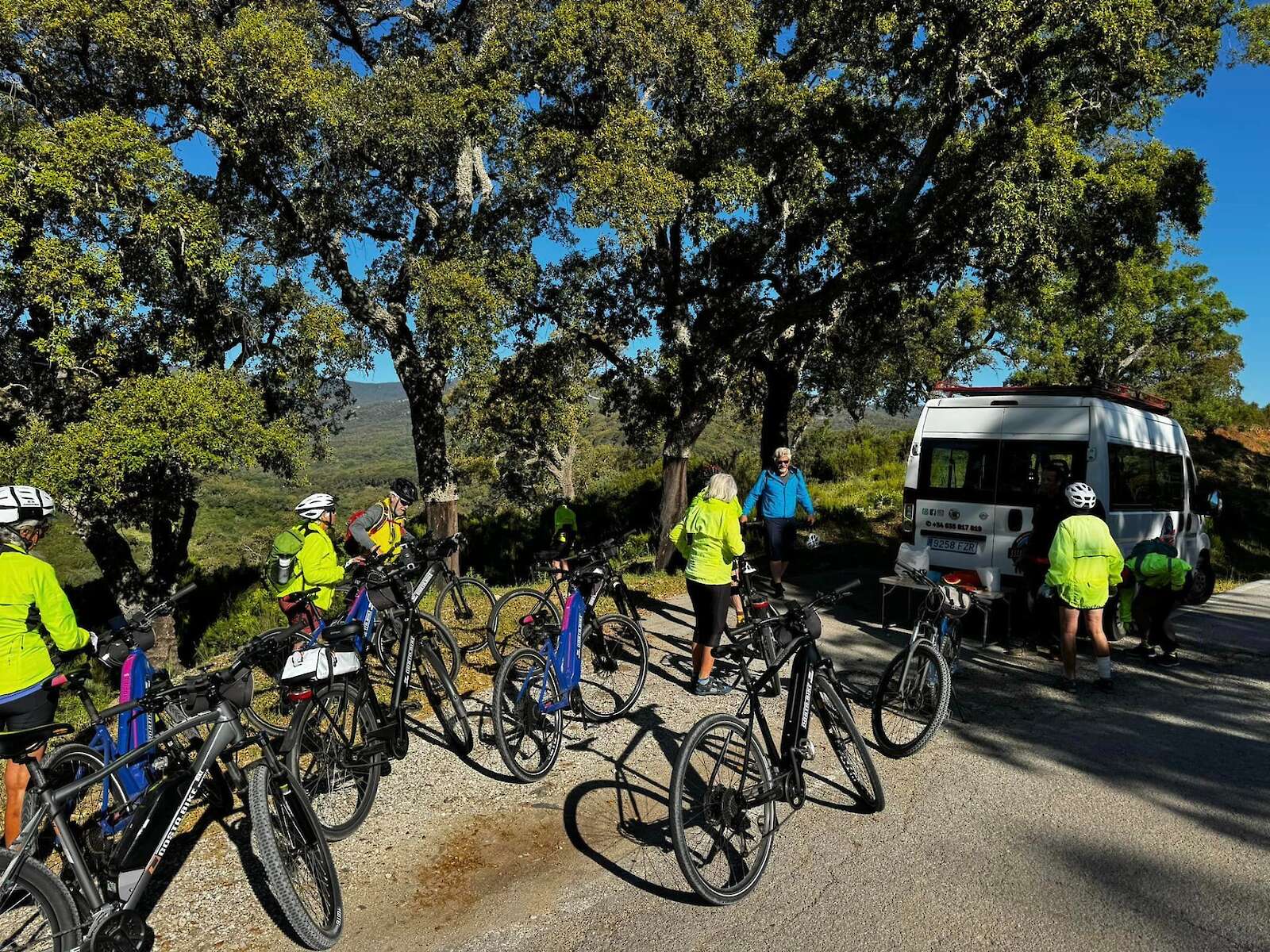
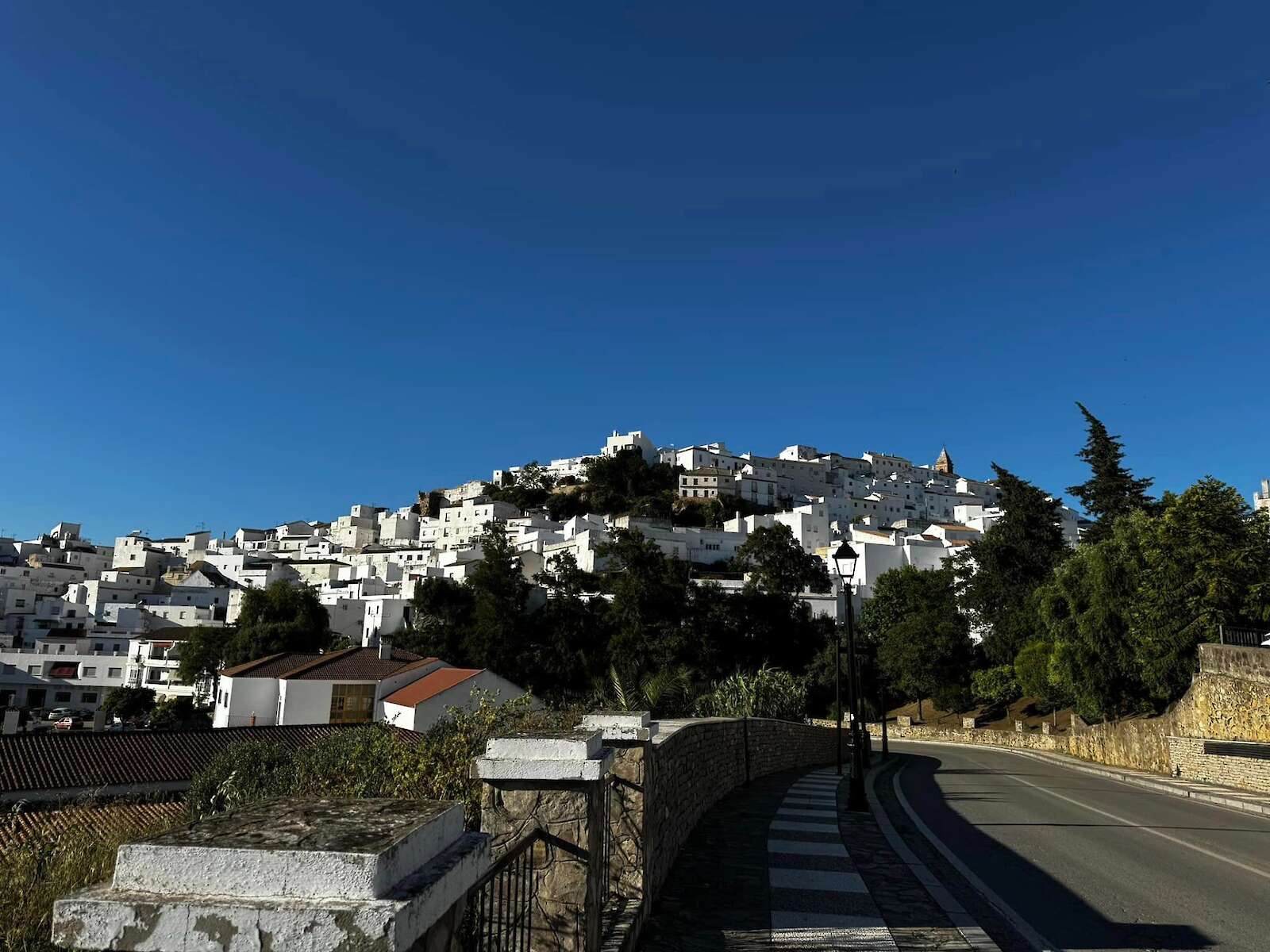
Day 4 began the trip's flip side: the coastal half. We left the mountains and greeted the cooling springtime Poniente breeze coming in from the coast, as we continued westward as far as we could. This leg turned out to be our most difficult stretch – not steep uphills or winding turns, but the wind! As we descended, the gentle Poniente became a gale – blasting in our faces, making headway surprisingly laborious; only having our e-bikes prevented utter exhaustion! Through this stubborn wind, our hilly, richly forested descent route gave way to undulating, open fertile wheat, cotton and tobacco fields; these in turn morphed into flat coastal grassland. Then, upon rounding a last low hill, behold! –
Suddenly, the deep-blue Atlantic appeared, infinite and gorgeous! Soon we reached our destination – the beach town of Conil de la Frontera. Within three short hours we felt we teleported between two worlds! Conil continued the chain of whitewashed villages, but now on the coast, nested quietly behind the large dunes, with more people, but still comfortably uncrowded.
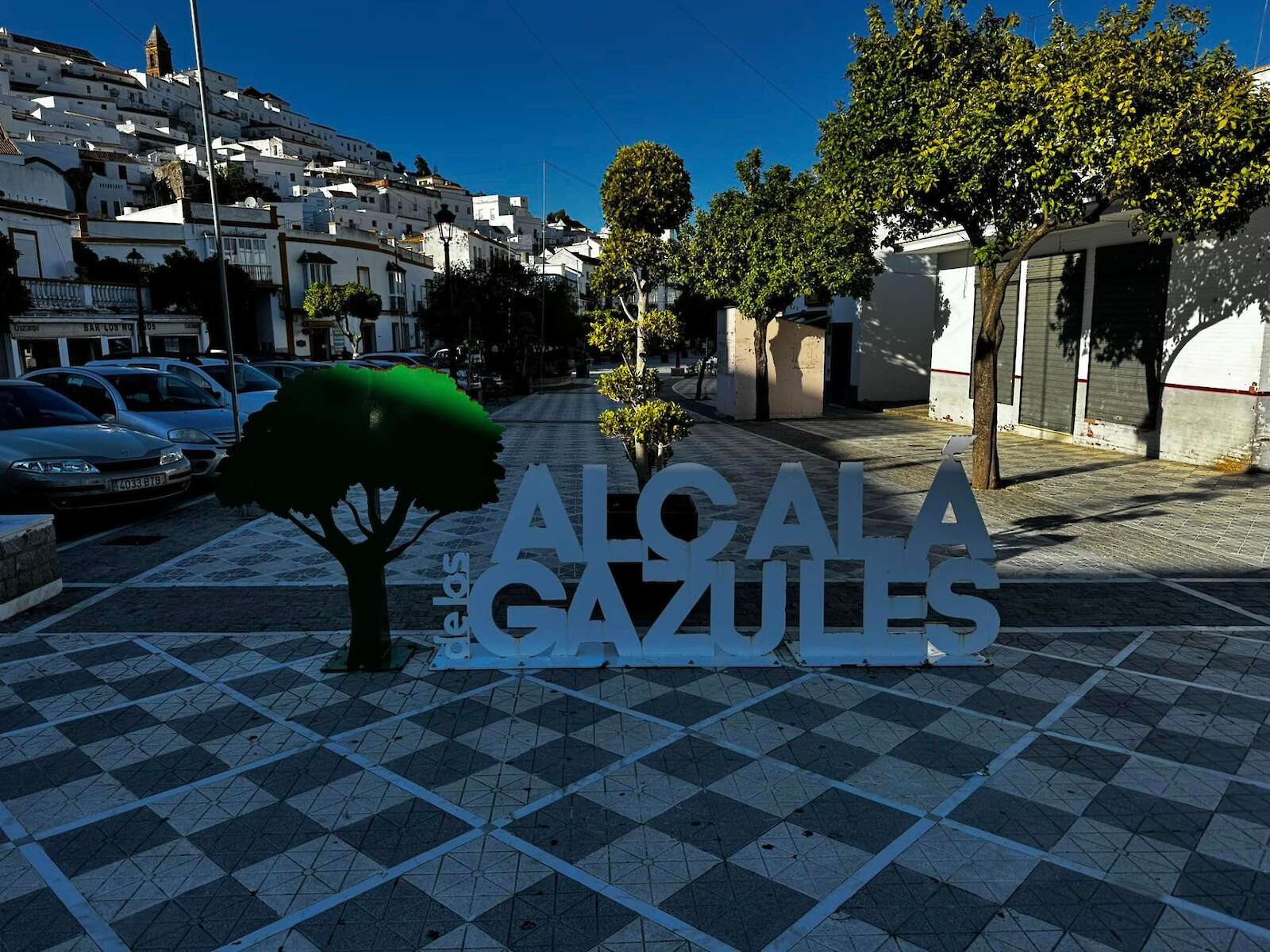
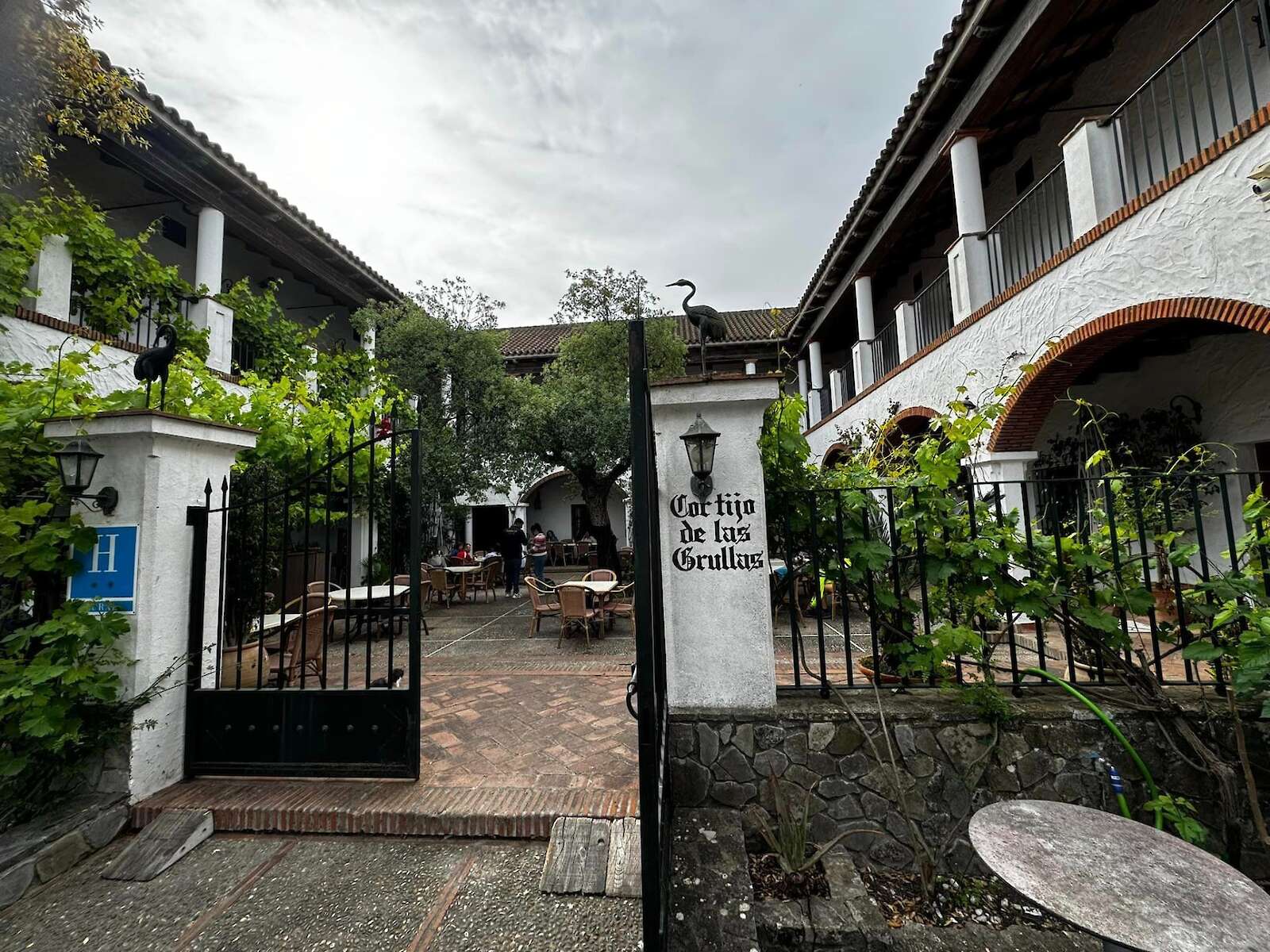
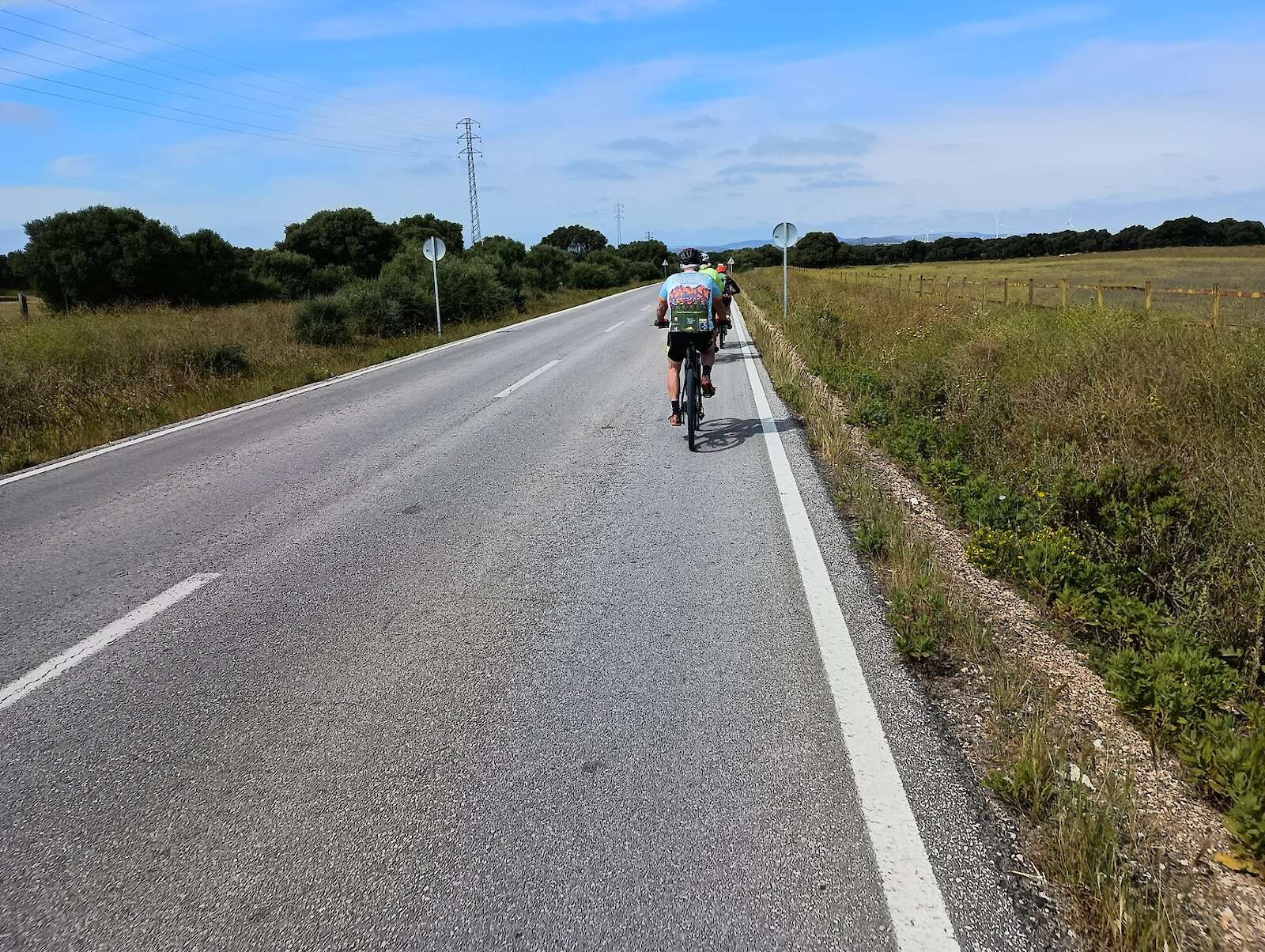
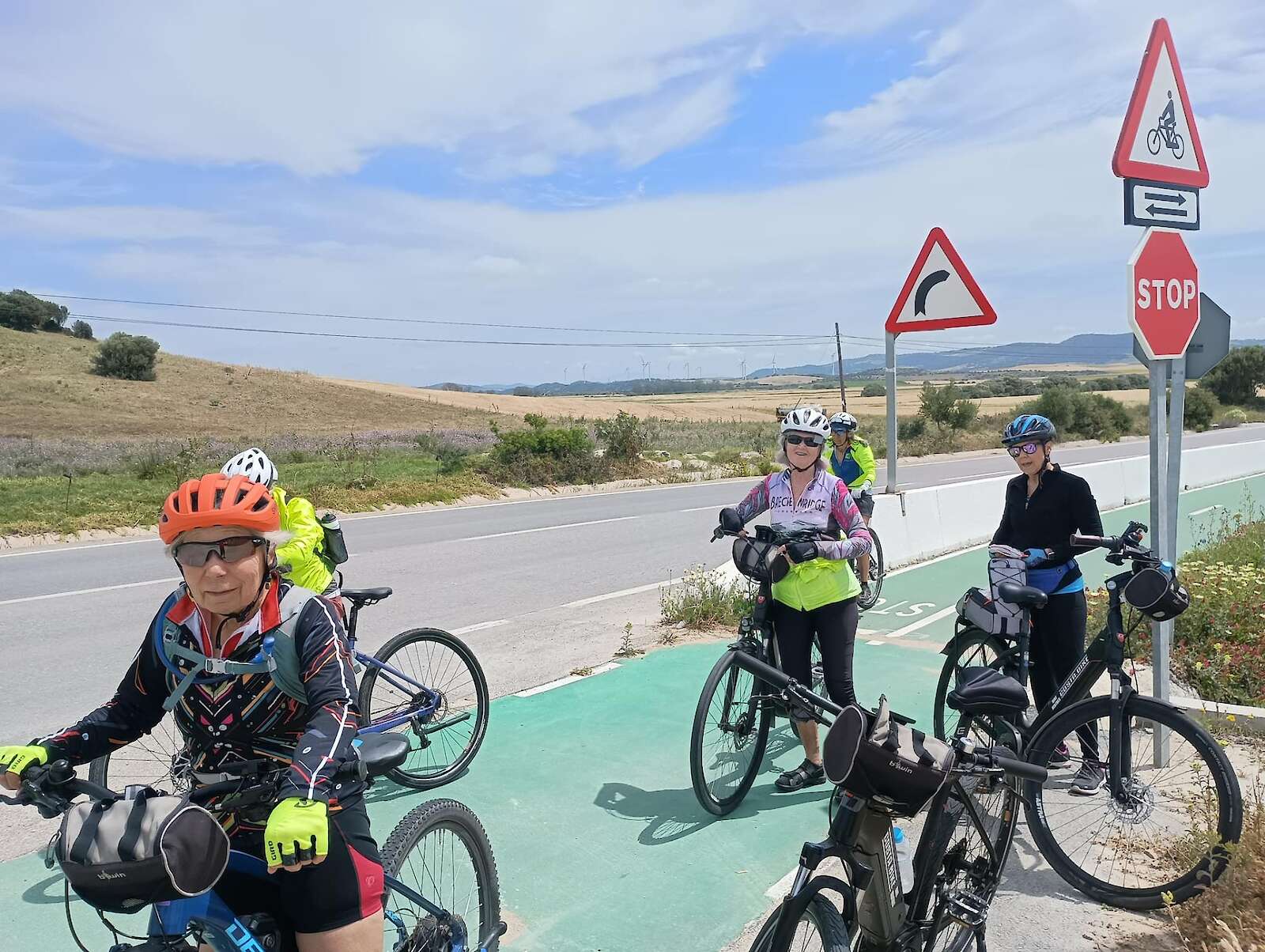
The next three days would take us southeastward down the Atlantic Coast, through Barbate, Zahara de los Atunes, and finally to our terminus in Tarifa. This was a breezy, leisurely cruise past balmy, white-sandy beaches, moonlike dune fields, and aromatic lemon and peach orchards. We also made challenging ascents into the coastal hills for brief stretches before descending again to the coastal flats. We were ensconced in the magic of this region, a land of pirate coves and caves punching holes in the coastal cliffs, ancient Roman towns buried under the gently sloping plain, beckoning, crystal blue Atlantic water, and the stout wind generated by the converging Atlantic and Mediterranean currents.
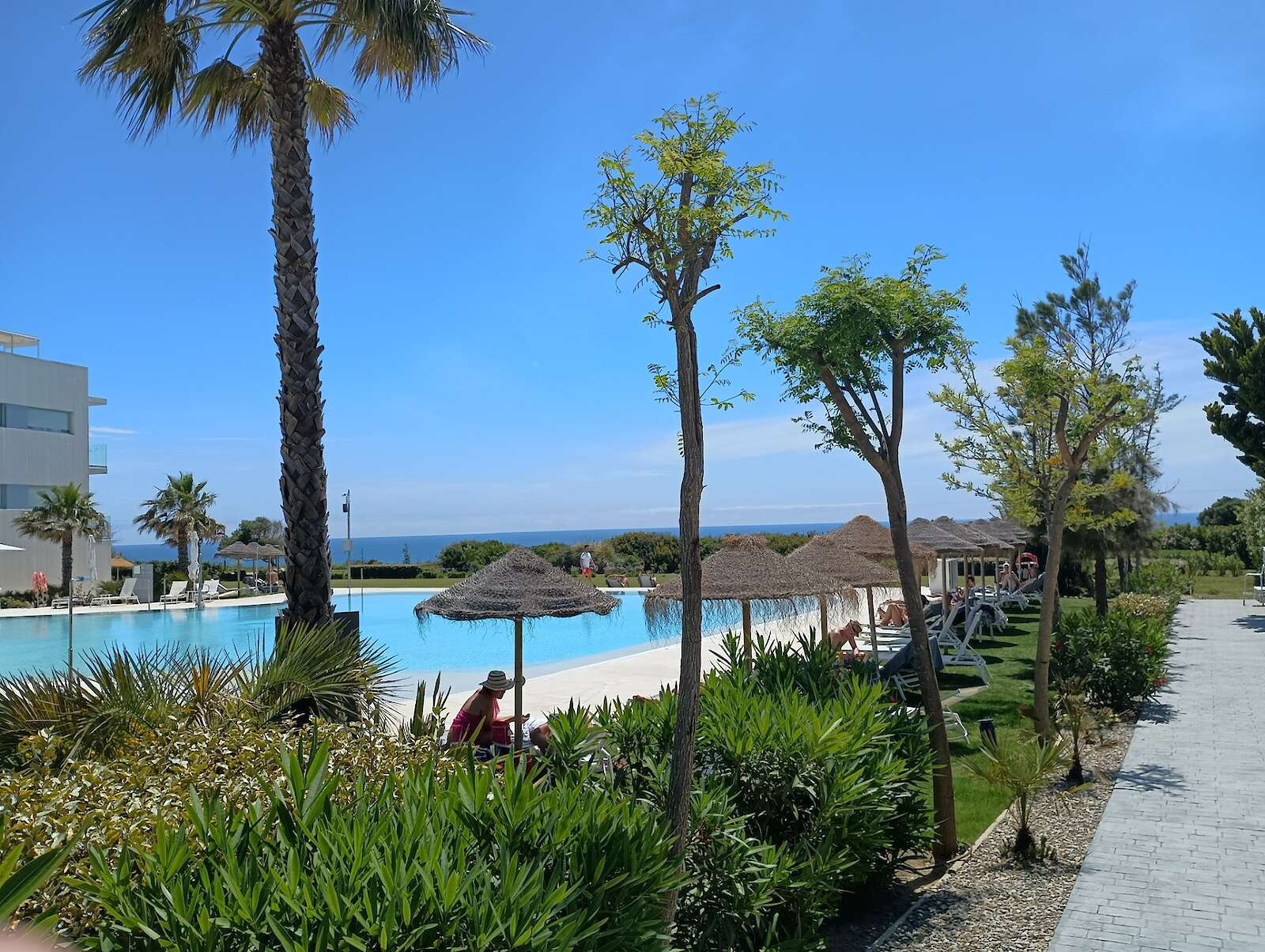


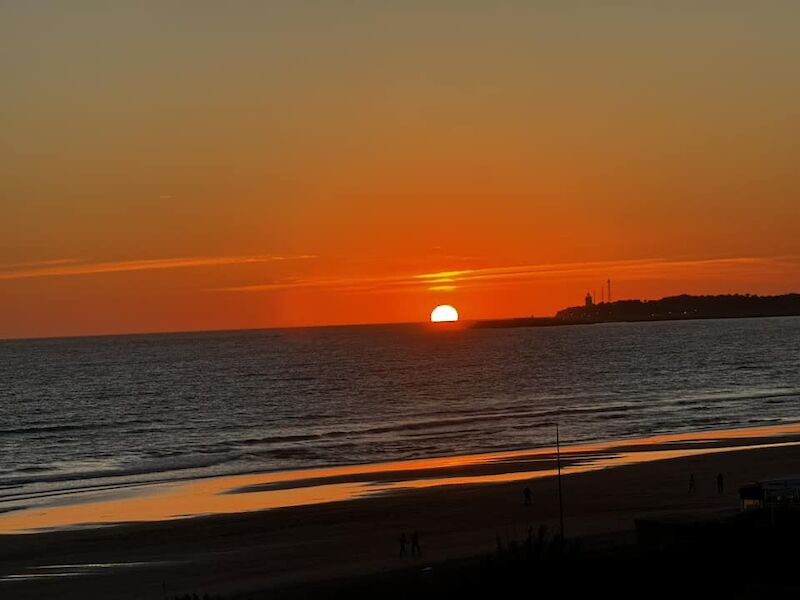
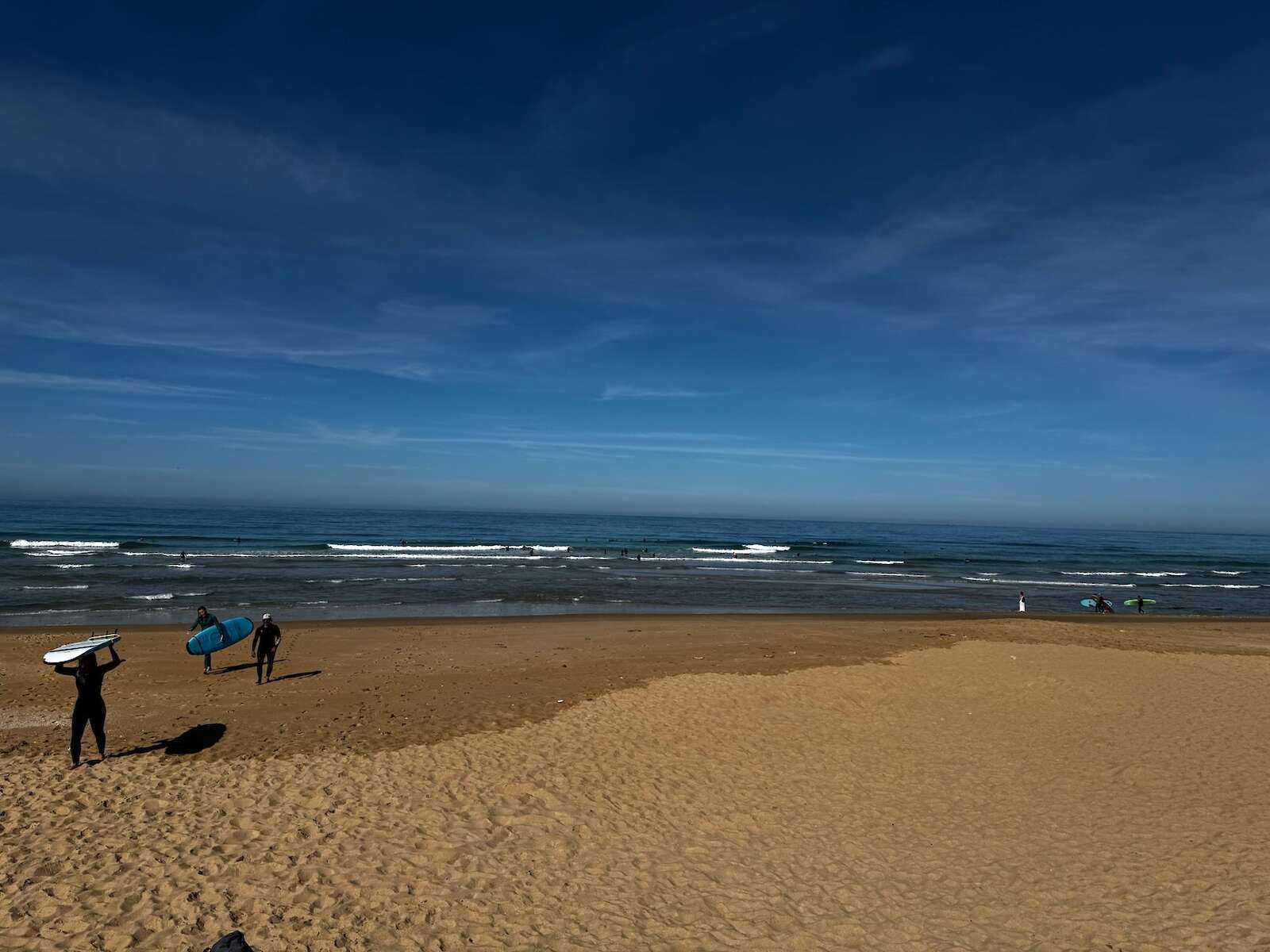
From Conil we rode along the beach, pausing briefly at the Surfing Capital of Spain, Playa de el Palmar. Palmar's geology often means amazing, long, even waves, and on the right days surfers swarm in like bees on a honeycomb. And ours was such a day - the beach was packed as the word obviously got out. Then we climbed back into the coastal hills, and were rewarded with stunning, indescribable vistas of the coastline for miles, as if we were flying! Shortly we reached scenic Barbate, taking in a delicious seafood lunch, and the pretty, curving beach paralleling the long, sweeping promenade.
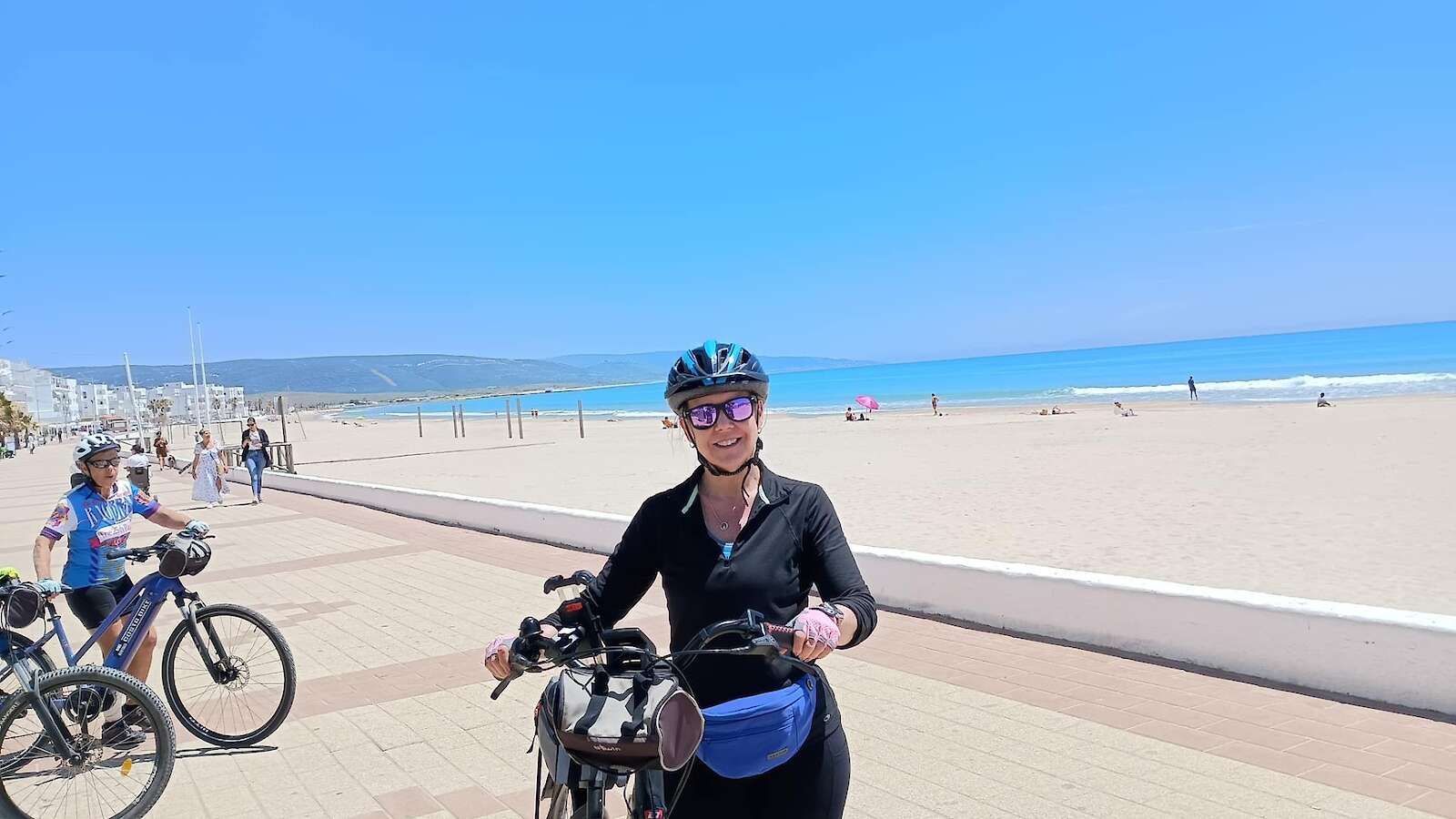
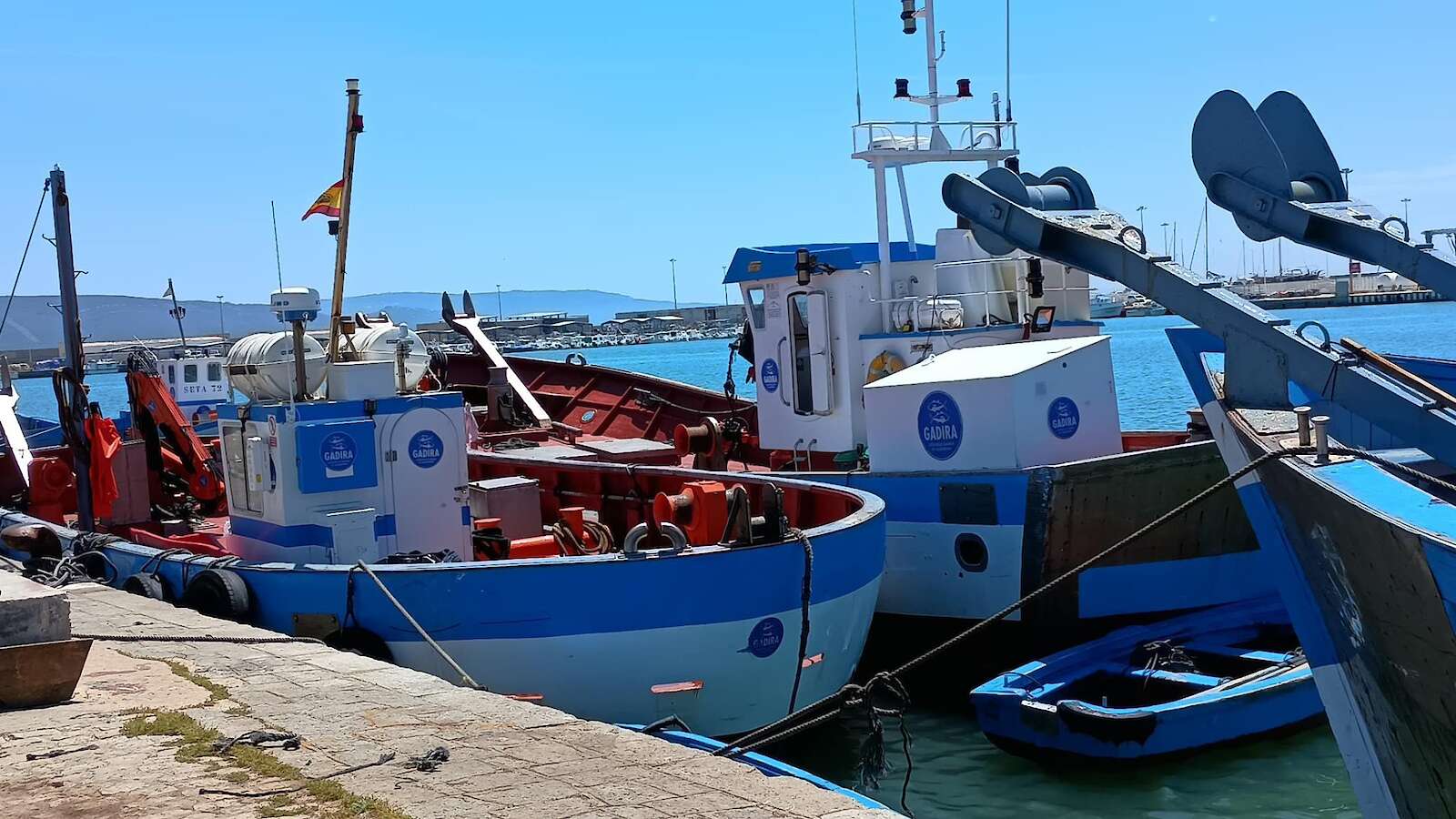
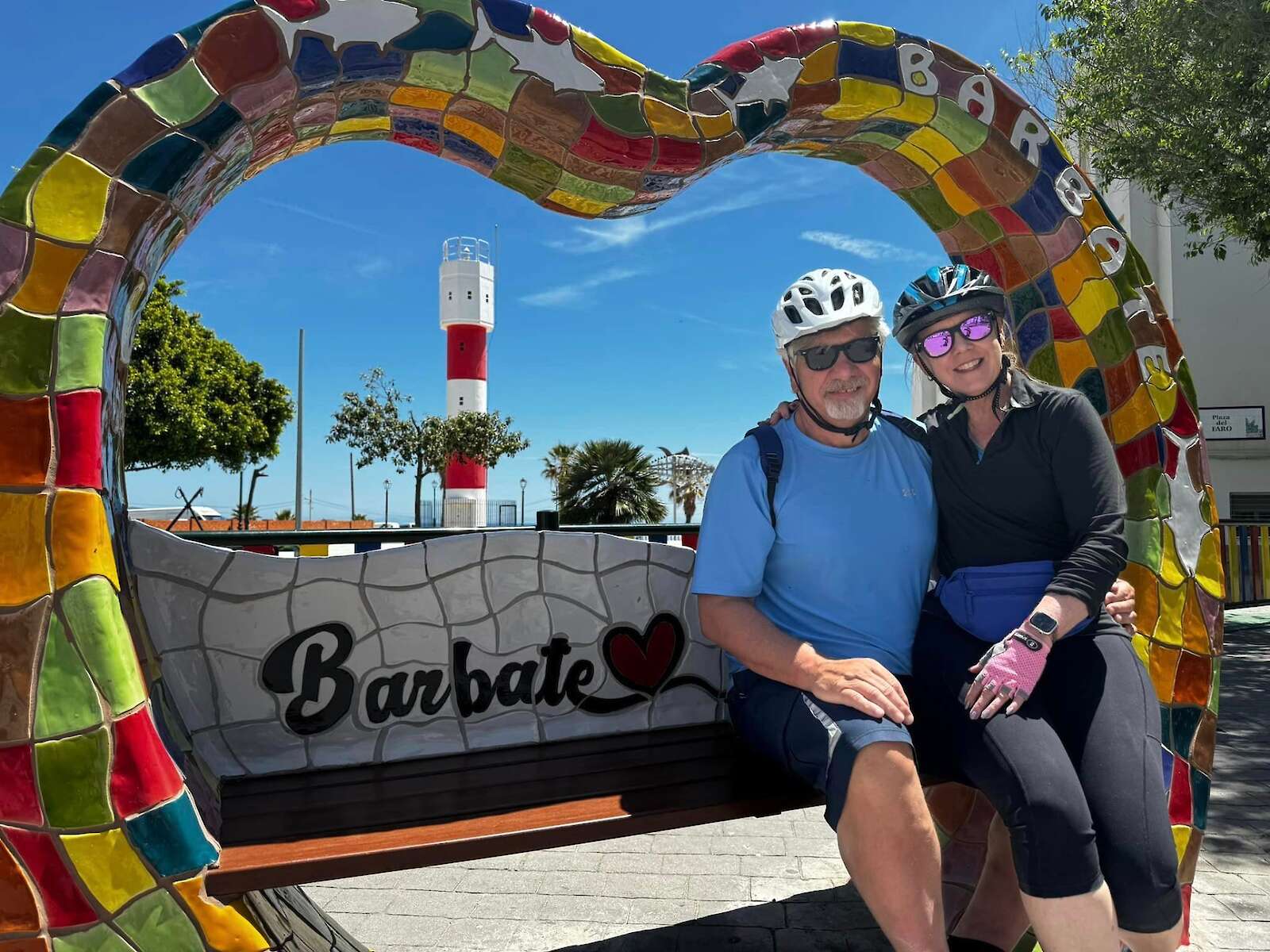
The final day brought us to the old fishing (now modern tourist) town of Zahara de los Atunes - yes, named after the Sahara, just across the Strait! Next, we visited the ancient Roman town of Baelo, a national historic site, where the tuna-based Garum sauce was produced, and brought the town prosperity and political importance as the provincial capital.
One final treat before arriving in Tarifa was a surprise - Stephen graciously hosted us for a few hours at his hillside home, and its gorgeous views of the mountains. Then we descended the final hour leg into Tarifa, one of the windiest places in Europe; and indeed the roaring wind quickly sandblasted us off the beach while kitesurfers went wild. Tarifa is lovely but the wind can be brutal – the southeasterly Levante one day and the opposite southwesterly Poniente the other, at this point where two continents and seas meet. Weatherbeaten, we made our way to our lovely harbor Alameda Hotel and one last big group dinner (seafood, naturally), to close out a trip that filled every sense to overflowing.
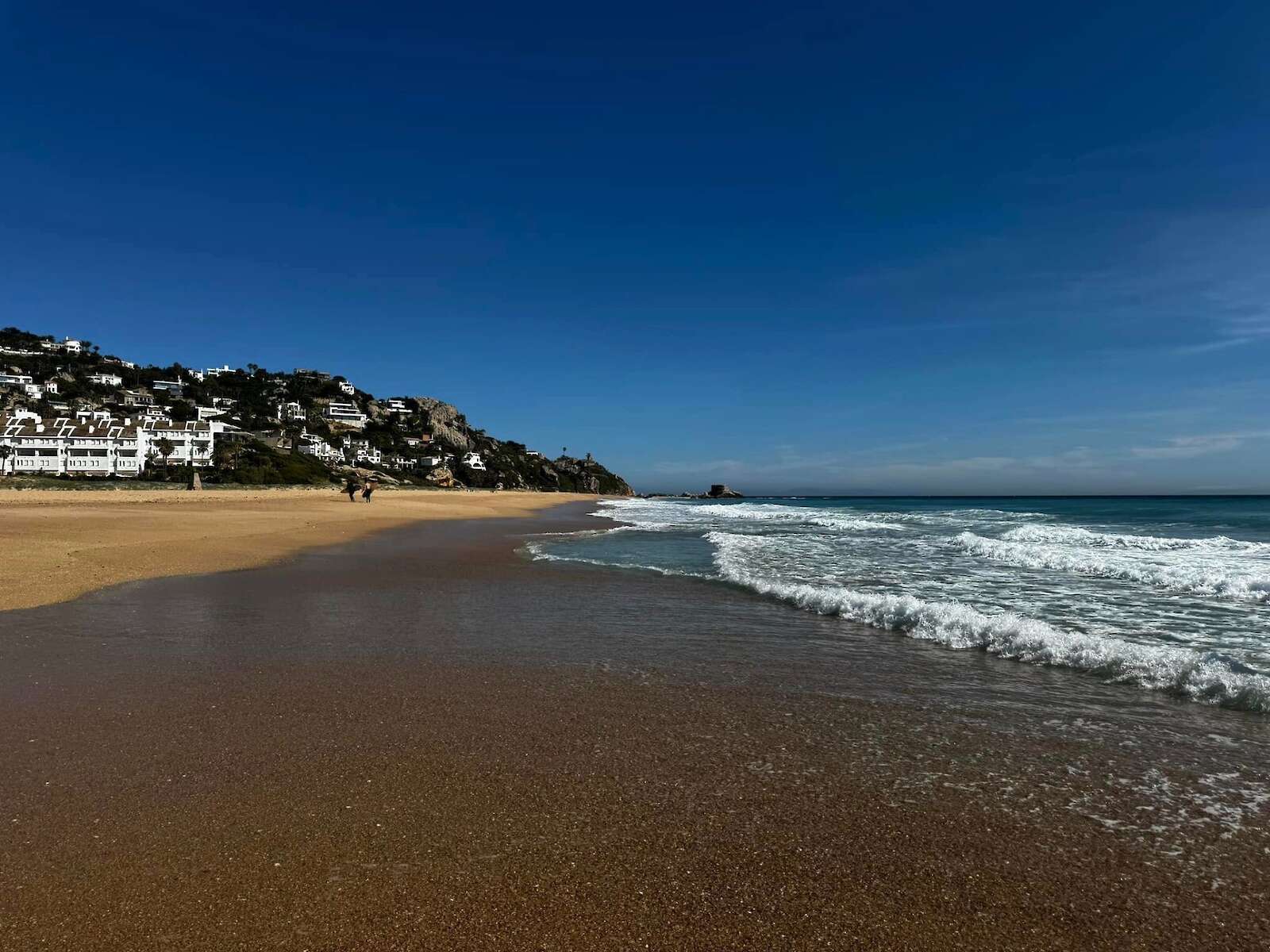
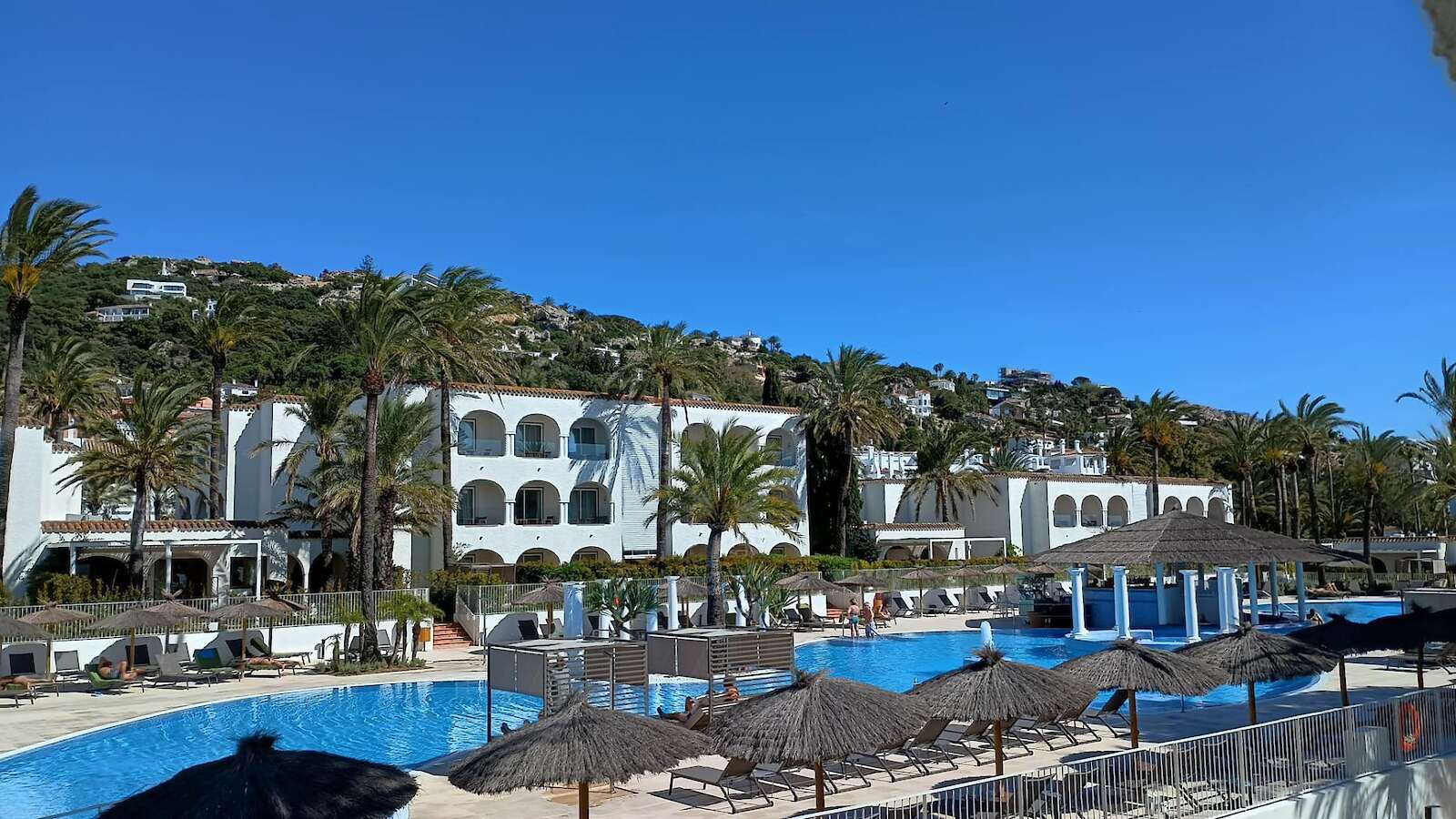
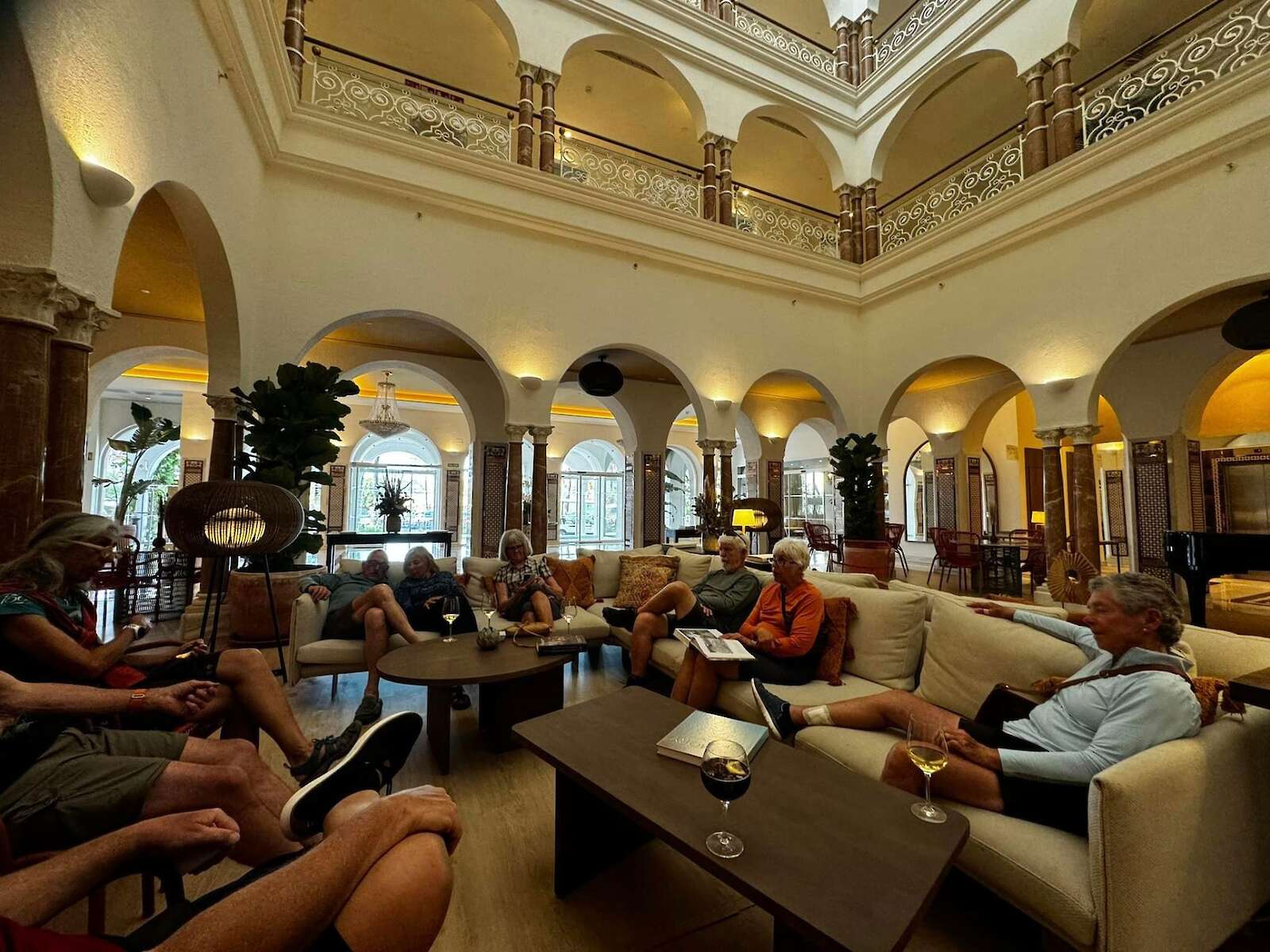


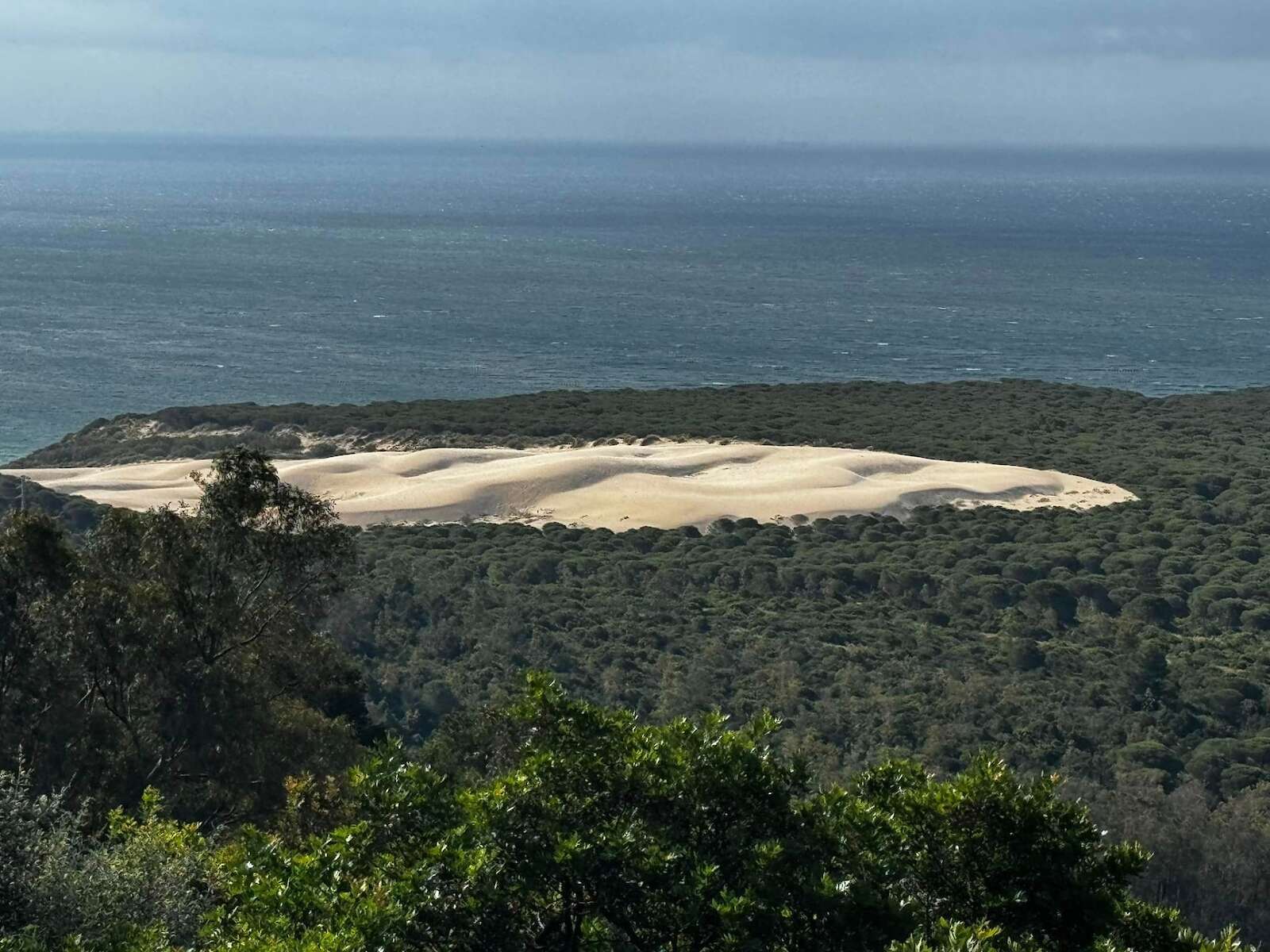
The next morning Joyce and I would embark on the early ferry to Morocco, concluding our week. And some months removed now, I can continue to say – what a trip! Or two trips! The variety of food, climate, terrain, and zeitgeist with this excursion is among the most eclectic of any weeklong trip (bike or not) we've taken. We ate scrumptiously; rode in heat, cool, sun, fog, and wind; pedaled through forests, beaches, plains, parks, and villages of one of Spain's less traveled, but wondrous regions. Perhaps it's not so hard to understand why this land had pulled people into it from pre-Roman tribes through the Visigoths, Moors, and Latins, up to the present day- it's a land that provides no end to wonder and amazement.
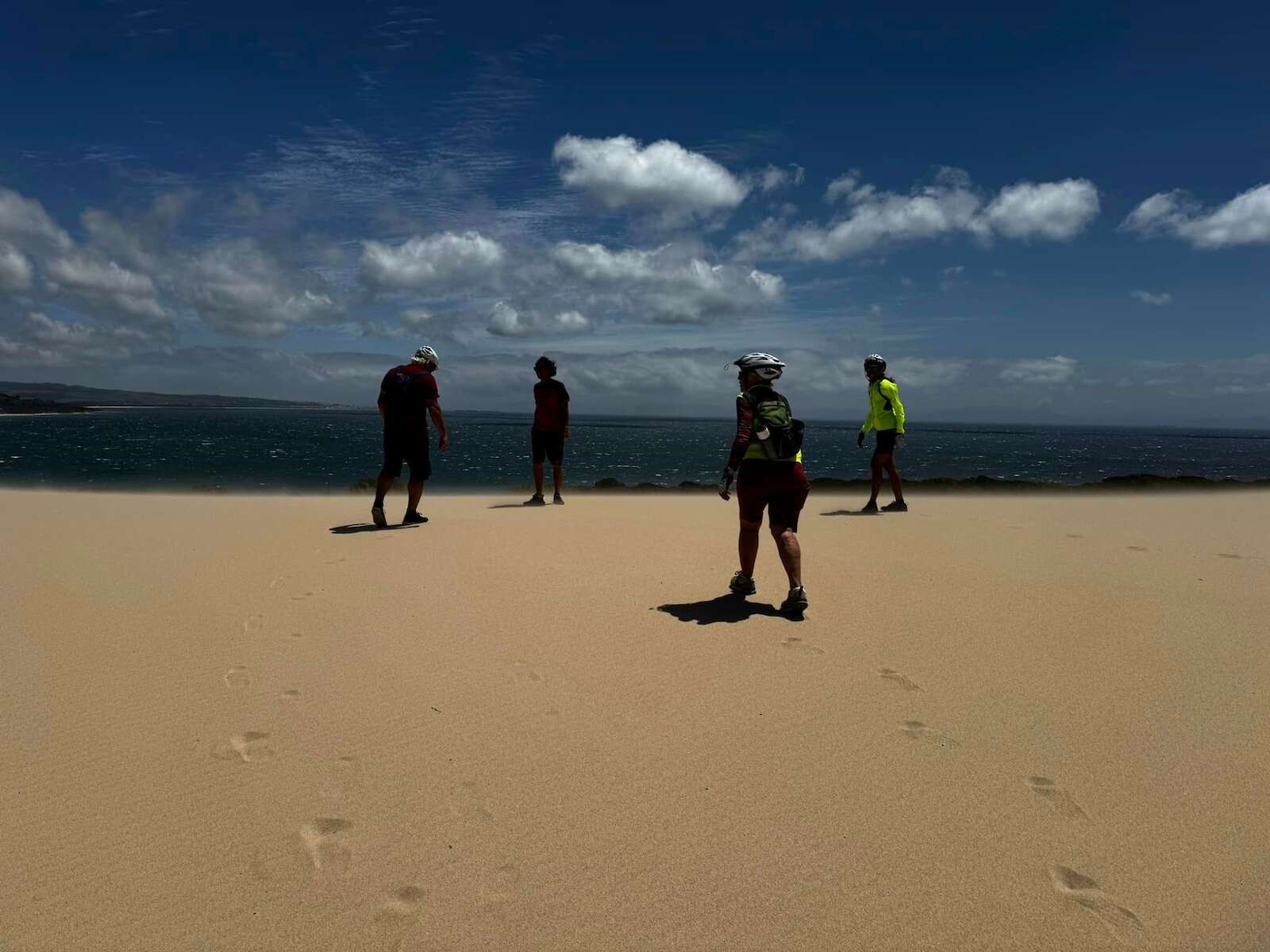
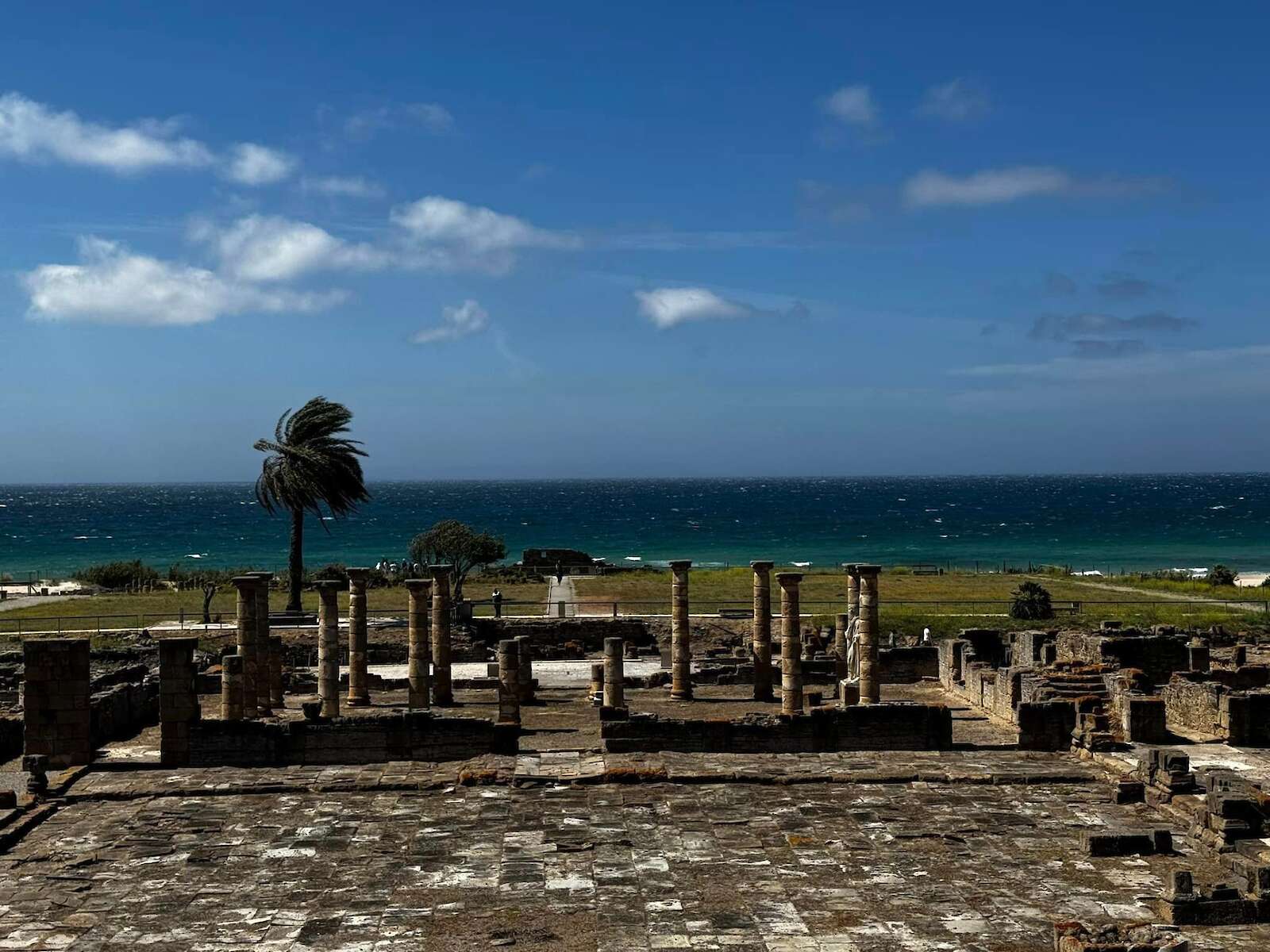
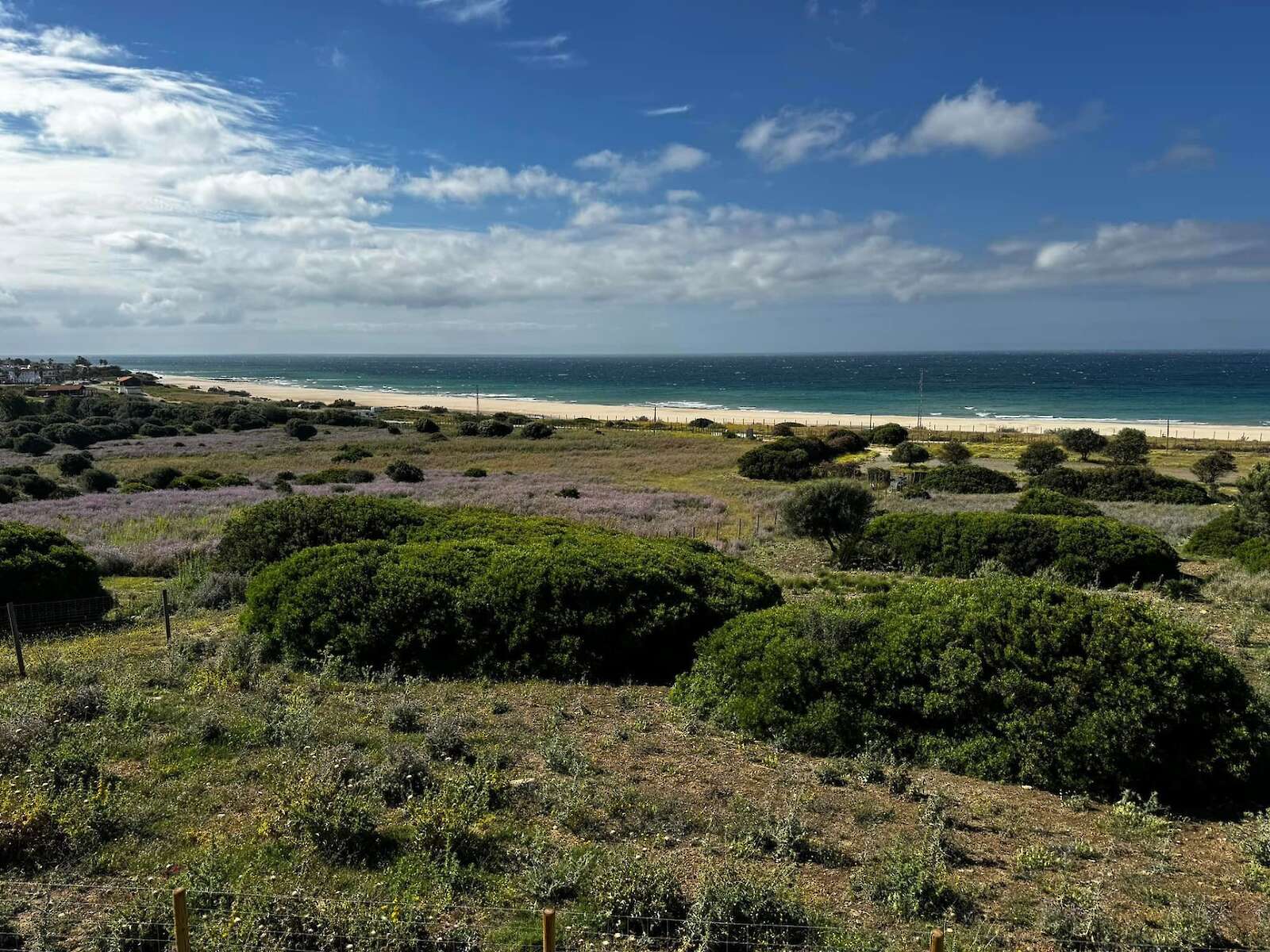
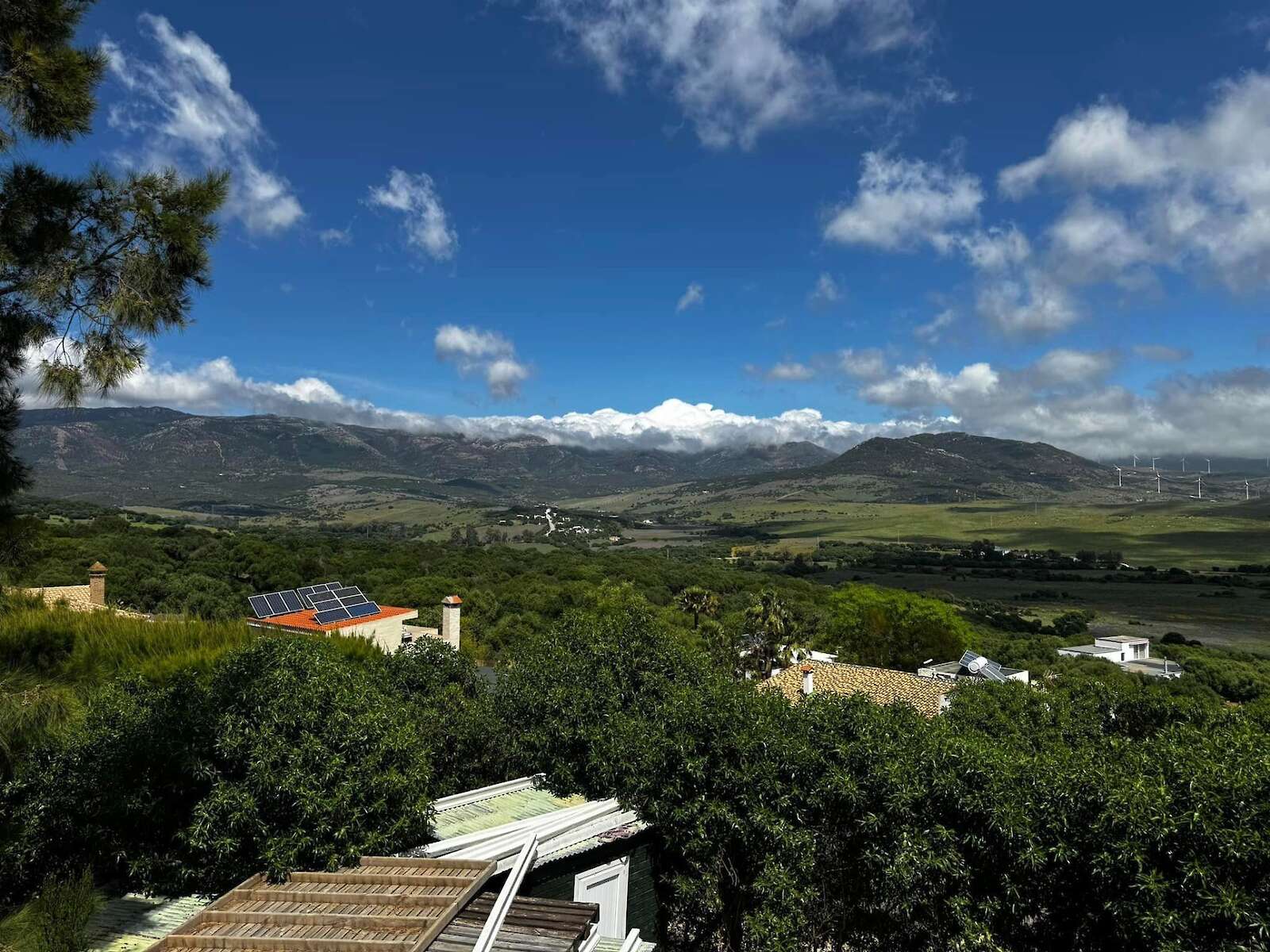
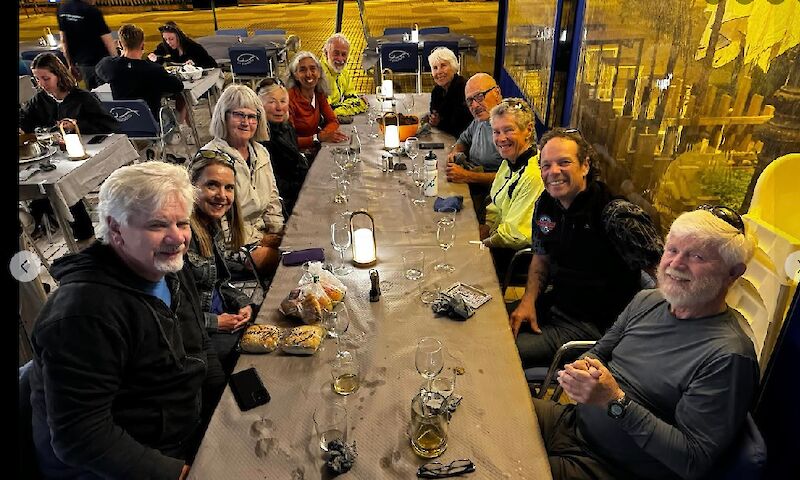
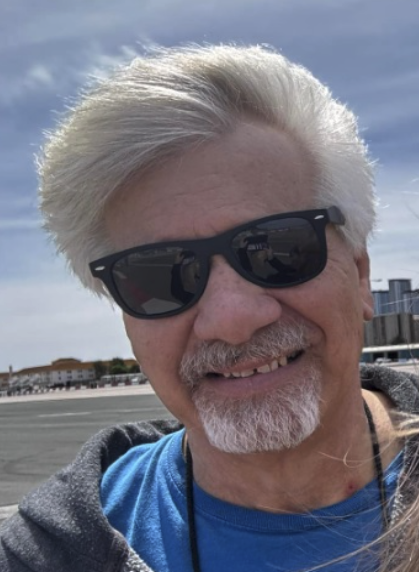 | Mike Hagye was born in Washington, D.C. and lives in Austin, Texas, where he taught music and history at the University of Texas. Mike now spends his retirement time in his music studio, and writing on music, history, and travel. He's also a ski enthusiast and has coordinated and led numerous group ski and travel trips over 40 years. Mike's family includes his wife Joyce, two grown children, and one grandchild (so far!). |
Did you enjoy Mike's story about biking in Coastal Andalucía? Looking for start planning your own trip? Check out all of our bike tours in Spain or contact us today to start planning!

